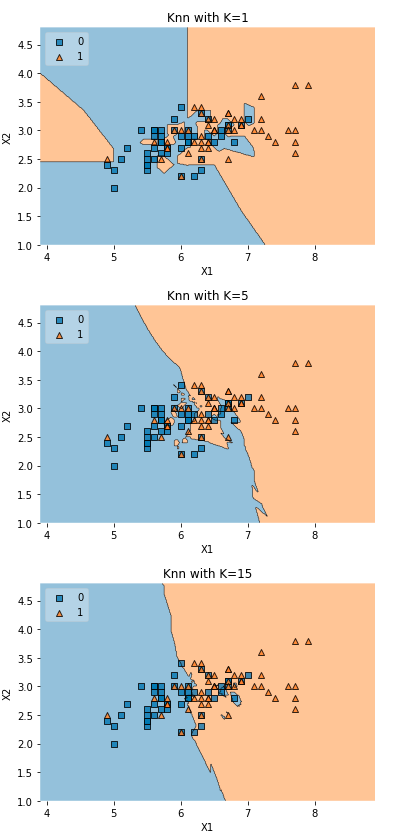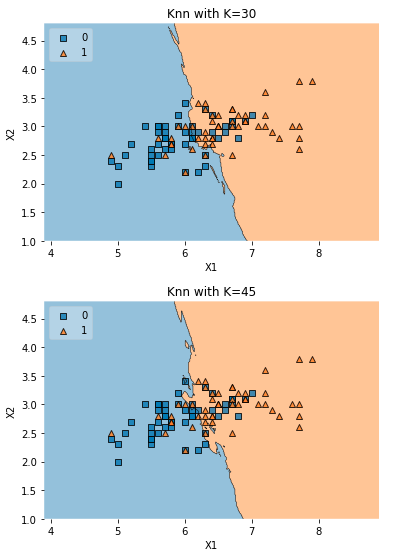Knn Impact Of K
import numpy as np
import matplotlib.pyplot as plt
from sklearn import datasets, neighbors
# https://anaconda.org/conda-forge/mlxtend
from mlxtend.plotting import plot_decision_regions
import pandas as pd
Function to plot the decision regions
def knn_comparision(data, k):
X = data[['x1','x2']].values
y = data['y'].astype(int).values
clf = neighbors.KNeighborsClassifier(n_neighbors=k)
clf.fit(X, y)
# Plotting decision regions
plot_decision_regions(X, y, clf=clf, legend=2)
# Adding axes annotations
plt.xlabel('X1')
plt.ylabel('X2')
plt.title('Knn with K='+ str(k))
plt.show()
Testing with sample data using different values of K
data = pd.read_csv('demo_data/6.overlap.csv', names=['x1', 'x2', 'y'])
for i in [1, 5, 15, 30, 45]:
knn_comparision(data, i)


- From this plots we can see that the decision boundary become more and more smooth with increase in K
- When K was 1 a single point has influced the decision boundary
